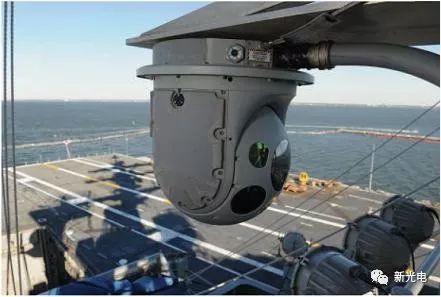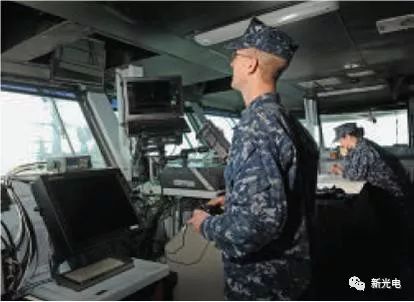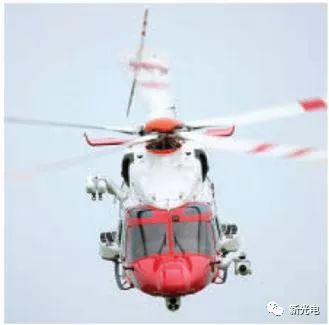Military research scholars and industry experts have combined a variety of optoelectronic/infrared (EO/IR) sensors, and their combined performance far exceeds the sum of the performance of each component, and the situational awareness is greatly improved. Throughout the history of war, situational awareness has become the focus of attention. As the 21st century battlefield continues to evolve toward networking, digitization, and big data battlefields, situational awareness is more important than ever for the safety of combatants and the triumph of combat. This is the stage for optoelectronic and infrared sensor applications. These sensors and their data processors provide a forward-looking approach to military deployment. The continuing challenge for the military is how to maintain the leading edge of optoelectronic/infrared sensor systems. Faced with more tactical and technically sophisticated adversaries, the US military has increased its investment in the importance and difficulty of optoelectronic/infrared sensor systems to maintain its technological superiority. The Chief of the Naval Operations Director, John Richardson, said at the annual Defense Forum of the US Naval Research Institute in December, "When you see the gap between potential performance and delivery performance, this gap has just begun, and the gap is not obvious. It may be so small that we can even convince ourselves that we are doing a good job. But we can see that as we move forward, the gap will only increase and become bigger and bigger." In general, the research and development value of optoelectronic/infrared sensors is only apparent in real military environmental exercises. "When technology is realized in the hands of developers, it is a miracle to see seafarers put into use." Richardson said, "The fleet's creativity is enormous." Keith Renan, technical assurance officer of the Sea Surface Optoelectronic/Infrared Sensing System at the Washington Naval Sea Systems Command (NAVSEA), said that the naval fleet recognized the value of optoelectronic/infrared sensors and therefore its demand is growing. Renan said, "The focus of the Naval Maritime System Command's current maritime mission is the intersection of multiple tasks and functions, such as navigation, armed defense, surface warfare, air defense and other safeguard areas. The key driver is the target / Night and large-scale surveillance of photoelectric and infrared sensor motion images, which can improve user's target recognition, threat assessment and ability to predict intentions according to the rules of engagement, and guarantee the use of weapons through automatic tracking, and protect the fire control scheme through the line of sight. Can evaluate the operational effects." The US Navy's Experimental Situational Awareness System (SAWS) uses 360 photoelectric/infrared sensors placed in front of and behind the aircraft carrier's island for 360-degree reconnaissance. For future performance, Navy experts are working to improve the performance of existing sensors with new optoelectronic/infrared technology. “The current development of situational awareness is focused on enhancing the performance of existing sensors (mainly focused on sensors for special weapons), coupled with additional sensors for situational awareness, to improve situational awareness for ships,†said Renan, “different classes exist. There are some differences, but there are similarities. We are doing a demand analysis on sensor standardization to improve its performance and reduce the cost of the entire main ship." Sensors are evolving to be used simultaneously for weapon systems and situational awareness. The Navy's leadership wants to target and monitor sensors for specific operational missions, so the Naval Sea Systems Command is working to enhance the situational awareness of these sensors and reduce losses on special-purpose sensors. “Currently, our sensors are used as point solutions by various weapon systems, so we are faced with how to integrate sensors into ship combat systems and video streaming, such as improving overall interoperability. Standards help integration within open systems Sensors and other components of the combat system can be better integrated," said Renan. "If we can standardize sensors, it would be beneficial to use a common module to perform situational awareness and operational support. There are many important things to do, such as Standardize system interfaces and module levels, and standardize other technology refresh cycles and maintenance modules so they can be used across multiple platforms and systems. Standardized to help achieve the Navy's open architecture goals and in use cycles Remain competitive." Maintaining technology leadership not only depends on improving individual sensor technology, but also requires integrating two or more sensors into one component, blending raw data, transforming platform data processing into usable information, from battlefield commanders to individual soldiers, sharing the entire set in real time. Device information. "The general direction of our research and development is to realize the full situational awareness in the combat network." Andrew Saxton, marketing manager of the Opto/Infrared Surveillance Products Division of Wilsonville FLIR Systems, said, "In the next five years, each battlefield installation will be seen." The performance of the development is remarkable, not only can share the vision of the command center, but also can be transmitted to other battlefields. I think the use of (related sensors) will remain relatively stable, but they will be commanded using different devices." A common trend in optoelectronic/infrared sensors is to reduce size, weight, and power consumption (Sa, Weight, and Power Consumption, SWaP). “When you get better performance from a smaller system, you can replace a large aircraft with a small drone, or replace a large platform with a light tank. As more sensors become portable, more tasks can be done on the ground. Not done in the air. The new system facilitated by distance and operating conditions gives the conductor more flexibility to achieve the goal." The leader in these developments is a new application for optoelectronic/infrared sensor complexes ranging from naval vessels to special operators. “Photovoltaic and infrared are now more or less connected,†said Peter Zins, a sensor expert at the US Army Intelligence and Electronic Warfare and Sensors Project Executive Office in Fort Belvoir. “Photoelectric sensors work in daylight, infrared sensors work day and night, but Photoelectric sensors have a wider range of observations; they are more interoperable. In the long run, we focus on better sensors, more sensor fusion and Aided Target Recognition (AITR). Continue to pursue a larger focal plane. Arrays (FPA) have higher resolution and can work farther outside the zone. I am skeptical about the true new optical start. Adding larger apertures to these sensors is a challenge." Sensor fusion is a major trend in military optoelectronic/infrared sensor technology. “All types of multi-sensor fusion, as well as the creation of software that provides non-data products, are key to long-term growth. It is as costly as sensors and requires more manpower to view each sensor. Resolving more data requires shrinking raw data and The time between practical information, otherwise it will involve more manpower." Several major contractors have built a wide variety of platforms, incorporating a large number of focal plane arrays, optoelectronic/infrared sensors, different frame rates, and many channels that spew large amounts of data. Some companies, such as Curtis-Wright Defense, have built digital signal processing high-performance embedded computing modules in sub-systems to capture data, usually pre-digitized, and some in high-bandwidth formats. Some companies have purchased separate modules, and some companies have pre-installed subsystems. “There is usually no processing technology for all applications,†says Mark Cotule, Senior Product Manager, Digital Signals, Curtiss-Wright Defense. “The most common combination is Field Programmable Gate Arrays (FPGA). ), first grab the fiber stream, perform pre-processing, and then deal with General Purpose Graphics processing units (GPGPU) - teraflops per second, high-throughput processing and such as Xeon D (cognition) More powerful Intel components can analyze data and change patterns, like a commander or commander who can handle it." The US Navy's situational awareness system on the aircraft carrier USS Dwight D. Eisenhower uses two optoelectronic/infrared sensors, a laptop control station and multiple digital video recorders to provide 360-degree visual coverage of the ship, for armed defense, navigation, Search and capture operations. Different processing techniques need to be specifically mixed to handle the high-speed image fast data flow of the optoelectronic/infrared sensor. “The above mentioned is a “technical combinationâ€, (but) each application takes a different combination of field programmable gate arrays, graphics processors, etc. and different principals tend to have different combinations,†“The most common package in defense is VPX. If you need smaller package technology, we usually use industrial grade chips and adapt them to extreme temperatures, different vibration profiles, and seal against foreign particles,†said Toure. The Army is also working hard to strengthen the situational awareness of the battlefield. “The military should fully understand the situation in a complex environment. This concept requires photoelectric/infrared sensors to perform the aiming task. It also requires a wider range of situational awareness, which can be achieved with picture-in-picture and step gaze (essentially splicing). Here we rotate the sensor around and take multiple images and then stitch them together,†says Jins. “We hope to have better integrated loads in the future. There may be sensors covering many different bandwidths, but there are some software with AITR. Components can convert input data into information, or at least provide clues to operators." The military's focus in the near and medium term is to upgrade the original platform and system. Difficulties in the R&D budget prompted the Army to seek collaborative laboratories to find good ideas and develop technologies that would eventually be transferable. "We have moved from a fast-reaction mode of operation that will lead to longer-term frame-to-development techniques. Optical remote controllers (ORCs) are a much-needed product in the battlefield, and in the Bush era, have the economic power to solve the problem of death. ," said Jins. With the increase in military technology, many cutting-edge research from the commercial field has come on the scene. They have been adjusted to meet the needs of the war, but more advanced than before, the bit-based military hardware facilities are more responsive. Making new systems makes battlefield soldiers easy to use and intuitive, and close collaboration is key. "The requirements for higher resolution, more stability, and better imaging performance have never stopped. One of the new trends in Intel's systems is to provide something other than high-definition images. Our technology is more than just seeing a clear picture. Instead, other decisions are made from field equipment,†said FLIR's Saxton. “Our onboard, portable and in-vehicle systems provide operators with precise target positioning and they can share this information with regional commanders.†SAFIRE 380-HD on the AW189 helicopter from Augusta Westland The first is the development of high-definition imaging technology for widespread deployment in the commercial sector. "Before the military widely adopted, high-definition imaging appeared in the field of consumer electronics, but the goal of high-definition thermal imaging is a more difficult technology." Saxton said. “Last year we launched a high-definition thermal imaging camera HISS-XLR equipped with a rifle. This performance was previously only available on high-end airborne and in-vehicle levels, and is currently available to soldiers.†Naval offshore system command experts have examined the potential performance of wide field of view distributed aperture sensors and continuous 360 degree monitoring. Includes large format, small pixel focal plane array technology, spliced ​​sensor images, integrated wide field of view sensors and more conventional sensors for long range target recognition and classification. “The purpose of using a wide field of view is to incorporate automatic probing and multi-target tracking for a wider range of situational awareness for weapon systems and operational support. Wide field of view and interoperability between them and narrow field of view sensors are A big advantage, the latter can be more closely identified, threat assessment, discriminating false alarms, etc." NAVSEA's Renan said, "Our other focus is to use short-wave infrared sensors to improve visible-wave sensors at sea. Performance, helping to counter the degraded visual environment. And as an in-band laser imaging,†Reinan continued. “Image will ease some of the workload and enhance situational awareness in noisy environments. With those images, we can understand them. Management and display to avoid overloading information." As evidenced by the attacks on ships along the coastline and in the port, sea situational awareness is not limited to radar-to-enemy aircraft scanning or sonar-to-submarine detection. This is especially true for the next generation of hovercraft designed to perform day/night offshore, nearshore and onshore missions. Hovercraft operators must have the highest level of situational awareness in these mission environments, including not only visibility of the day, but also spray, high humidity, fog, smoke, and even sand and dust. The current radar, night vision and visual watches "three sets of cars" - relatively unchanged after World War II - on the Navy's Landing Craft (Air Cushion, LCAC), can no longer meet the requirements, the Navy is eager for this landing craft Look for new, long-lasting, low-cost optoelectronic/infrared imaging components. According to a propaganda notice of the 2015 Navy, “photoelectric/infrared systems (or near-hyperspectral imaging sensors) identify small-scale vessels and patrols in terrestrial areas where surface radar performance is limited by identifying terrestrial terrain, ocean and channel features and contact points. The boat can greatly enhance the operator's situational awareness." "Hyperspectral imaging systems with thermal contrast, such as photoelectric/infrared sensors, can detect and identify surface contact and beach land threats, and the radar characteristics of these threats are very weak." The unique combination of imaging, infrared imaging, NV systems and lasers, and ranging tools will enhance the operational operability of Air Cushion Vehicles (ACV). The notice mentions that the system can also be used for commercial hovercraft, ferries, pilot boats or other vessels operating on the coast or onshore, as well as the Army's river and military vehicles that perform missions on shore. At the same time, the Communications Electronics Research, Development and Engineering Center's Night Vision & Electronic Sensors Directorate (CERDEC NVESD) at Fort Belvoir's Army Communications Electronics Research and Development Center is working to surpass night vision systems. This night vision system, mounted on a night vision goggle, once made every American soldier wearing it "have darkness" in the 1990s and 2000s. As a key component of individual weapons, night vision goggles conquering the dark requires new and more advanced technologies. “Now the land-based ordinary soldiers have an image-enhancing eyepiece,†Dr. Donald, NVESD manager, said at the 2015 SPIE Defense Security and Sensing Conference. “Near-infrared night vision mirror technology has been 40 years old, magnifying starlight and ambient light. Excellent performance in generating images in the human eye. No simulation, no numbers, no light, no light." Night vision goggles often have operational limitations: no heat capacity, no seamless transition between day and night, no close observation. NVESD's enhanced night vision goggles use a visual enhancement channel, a hot aisle and an optical overlay that can be connected to the camera's output for image enhancement on a small display. Current enhanced night vision goggles still do not have full digital performance. We want a device that "has a digital sensor, a head-mounted display, or an imager that sends a signal from a digital sensor to the display." NVESD's Thunder added that his goal is a system: a camera (located at the back) A sensor, light display, memory and memory capacity to run application software. "This is the development trend of the soldiers, this is the future." Returning to the near gaze/gaze to the adversary has become a force driving the advancement of optoelectronic/infrared sensors and other enhanced situational awareness technologies. "Over the Pacific, our opponents are smarter and more agile than in the past 15 years," Curtiss-Wright's expansion of Cotule said. "Everything is developing, I think we will be smarter, but you can't assume us. Always stay on the top card and work hard. Just like the Gulf War, we have received a lot of damage from hot micro particles." 15000W Three Phase AC Source System
APM 3 phase AC Power Supply system model SPS300VAC15000W is applicable to the lots of testing sectors like home electronic appliances, power adapters, LEDs, laboratory, aerospace, medical ,automatic and scientific research testing etc.t The 3 phase ac power source system is able to analog output normal or abnormal power input for electrical device to meet test requirements.
Some features as below:
13500W Three Phase AC Source System,3 Phase Power Cord,3 Phase Power Cable,Power Source System APM Technologies Ltd , https://www.apmpowersupply.com

